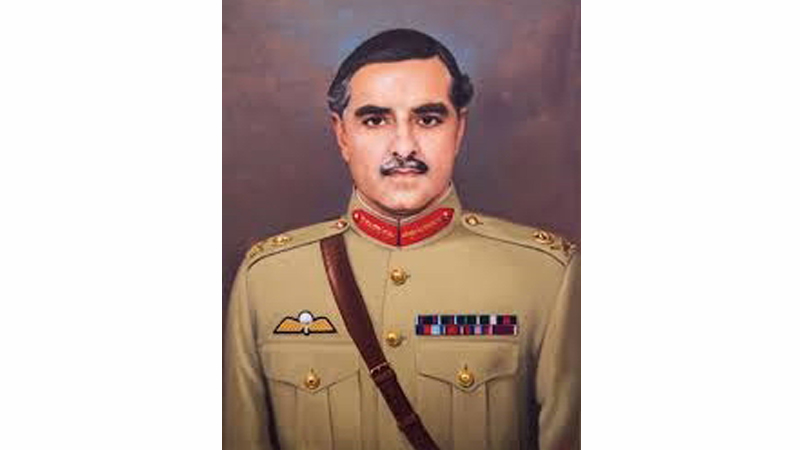Lt-Gen Gul Hassan’s memoirs — inside the GHQ during the 1971 War


Gul Hassan says that by September ‘India’s intervention was a foregone conclusion.’ Yayha had reached out to the US and gotten nothing in return. The Chinese had told him to find a political solution. He was now praying that Pakistan would be rescued by angles
Thus, Gul Hassan did not just see history in the making. He was part of history. In the ensuring two decades, he reflected on the great calamity of 1971 in which Pakistan lost half the country and its respect in the community of nations. He was in a good position to comment on decision making within the army’s high command. In 1993 he published his memoir. It came to a devastating conclusion: in 1971, there was a total and inexcusable breakdown in communications between the armed forces that were supposed to fight a war and the high command that had arrogated to itself the task of running the country. The disaster that came could have been prevented. The problem was that General Yahya wore three hats. He was the president, the chief martial law administrator, and the C-in-C. He had no time for running the army since he was busy holding general elections and managing the subsequent tension between the leaders of the majority party which was based entirely in the east and the minority party which was based entirely in the west. Yahya lost his grip on events when he launched Operation Searchlight in the east. Instead of restoring law and order, it gave birth to an interminable insurgency. He appointed Vice Admiral Ahsan as the governor. But Yahya found that Ahsan, despite being given “clear-cut instructions,” was “behaving like a dove in his dealings with Sheikh Mujib. He panicked and lost control.” Yahya relieved him. Next, Yahya appointed Lt.-Gen. Yaqub Khanas the governor and martial law administrator. Based on his assessment of the situation, Yaqub invited Yahya to engage in a dialogue with the Sheikh. When Yahya refused, Yaqub resigned. Much later, Yahya appointed a Bengali civilian governor to stem the tide. But “the change caused no excitement. Then, in quick succession, amnesty for the rebels was announced. This did not elicit even a lukewarm response.” Finally, by-elections were held but they turned out to be “a complete farce” since the candidateswere nominated by the martial law authorities.
After the war ended, Yahya blamed the loss of East Pakistan on ‘the treachery of the Indians.’ Gul Hassan blamed it “on our own blunders.”
Gul Hassan visited the east and apprised Hamid of what he saw. Hamid said he was going to find a way out of the “maelstrom” but did not lay out a plan. Perhaps he was “swayed by General Niazi’s ingeniously contrived reports.” Hamid did not convey Gul Hassan’s assessment to the president. Until the very end, the president remained blind to the conflict between his political and military aims. Gul Hassan noted that one did not need to be a genius “to sense the impending catastrophe.”The army would be fighting the Indians in the front and the rebels on the flanks and in the rear. He said it would be hard to imagine “a more hopelessly disadvantaged position for opposing a superior foe.” And given the circumstances, when he was most needed, the supreme commander, General Yahya Khan, had morphed into “a remote figure.” In the enveloping darkness, there was a complete “absence of direction” and no “cohesion in the nerve-center of the army.” After the war ended, Yahya blamed the loss of East Pakistan on “the treachery of the Indians.” Gul Hassan blamed it “on our own blunders.”
Published in Daily Times, September 10th 2018.
Recent Posts
- Pakistan
Punjab minister hosts dinner to honour award-winning journalists
Punjab Information Minister Azma Zahid Bukhari hosted a special dinner in Lahore to honour senior…
- World
UN and Palestinian officials accuse Israel of blocking Gaza aid at world court
On April 28, 2025, at the International Court of Justice (ICJ), U.N. and Palestinian representatives…
- Lifestyle
Alizeh Shah quits social media, cites emotional struggles and public criticism
Pakistani actress Alizeh Shah has officially quit social media after facing increasing online criticism. Known…
- Business
SBP’s dollar buying unsustainable, economy may grow below 2%: Hafeez Pasha
Former finance minister Dr. Hafeez Pasha has warned that the State Bank of Pakistan’s dollar…
- Top Stories
Gold gets cheaper: Rs 1,600 per tola cut in Pakistan
Gold prices in Pakistan continued to fall as the local market responded to global trends.…
- Sports
Rajasthan royals vs Gujarat titans: Key players to watch in Jaipur showdown
The 47th match of IPL 2025 will see Rajasthan Royals (RR) take on Gujarat Titans…
Leave a Comment